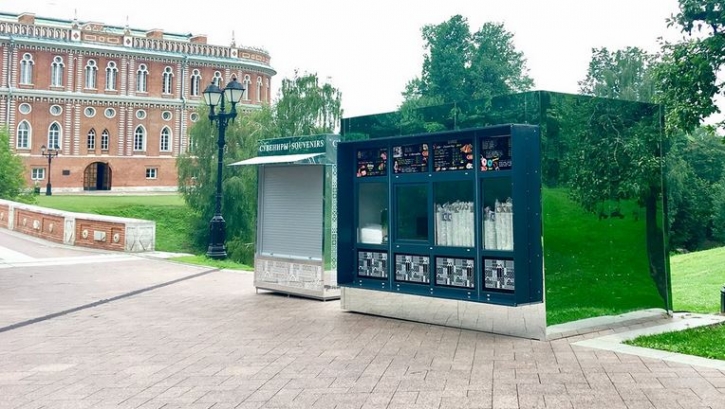Tsaritsyno Park: Trilingual navigation, squirrel feed, and plenty more

Over 500 signposts, notice boards, and maps in Russian, English and Chinese will be distributed throughout the park. Some of these will have QR codes for audio-guides. Mirror kiosks blending with the environment and two vending machines with squirrel and duck feed will complete the picture.
The Tsaritsyno Museum Reserve under the auspices of Moscow’s Department of Culture has upgraded its navigation system, adding over 500 information carriers – signposts, horizontal maps, information stands and 2.5m x 1.5m maps of the park – in Russian, English and Chinese.
The new navigation system will make it easier for visitors, including foreign tourists, to find their bearings in the 220-hectare park. The QR codes on some of the signposts, information stands and maps will activate audio-guide stories on the park’s history.
Buildings bear information plaques; alleys are equipped with stands featuring the park’s schedule and internal behaviour rules. There are 2.5m x 1.5m detailed maps of the park at its seven entrances, each one graced with the museum’s logo – the capital letter E in sunrays. Yet another innovation includes four coffee and three souvenir mirror kiosks in the park’s central area. These are faced with panels that reflect the surrounding landscapes.
Nearly 40 ice-cream and soft-drink carts, which are scattered all over the park, are designed in the same way.
There are vending machines near the Dam Gate and the Intercession Gate for those wishing to feed the squirrels or the waterfowl. The former are offered hazel-nuts and sunflower seeds, the latter – a mixture of processed cereals, lime dust and bran.
With its 780 parks, Moscow has been recognized as one of the world’s greenest cities. Trees and shrubs cover over a half of Moscow’s old territory, and parks multiply with each passing year. For example, the 10.2-hectare Zaryadye Park opened near the Kremlin in central Moscow last year, showcasing a northern landscape, meadows, the steppe, and central Russian landscapes (a mixed, conifer, and littoral forest, a birch wood, etc.). A garden in Bolshoi Spasoglinishchevsky Pereulok that has replaced a piece of waste land is another case in point. The facility has a dry fountain, a rotunda with an amphitheatre, summerhouses, benches, children’s playgrounds plus sports grounds.
The existing green zones are being upgraded in all parts of the city. For example, restoration work has come to a close at the 50th Anniversary of October Revolution Park in western Moscow, which now has volleyball, basketball, badminton and table tennis grounds as well as outdoor fitness equipment. The Garden of the Future Park has been refurbished in north-eastern Moscow. Laid out on the former Leonovo Estate, it boasts elements of 18th and 19th-century park architecture as well as modern grounds for relaxing and recreation.



